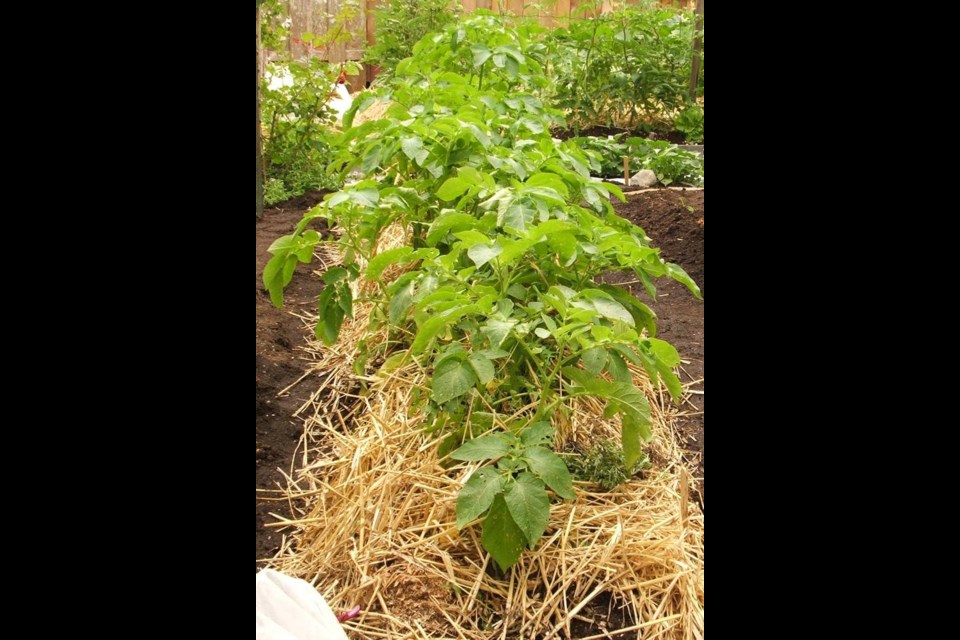Dear Helen: I fear more hot, dry summers lie ahead. Are there ways for home gardeners to mitigate the effects of these challenging conditions? I’m not ready to give up on growing favourite flowers, fruits and vegetables.
P.H.
A primary step toward increasing heat and drought resistance in our gardens is to plan for enhanced moisture retention and nutrient content in the soil — the foundation of plant health.
First, cover empty ground for the winter. Small or chopped leaves are good. They plump soil texture and break down efficiently when turned under in late winter. A soil cover also protects soil surfaces from compaction and leaching of nutrients in winter rains.
Prior to planting in the spring, dig in a generous layer of whatever compost you have — home-produced or purchased. Next spring, I’ll be investing in coconut fibre (coir) to incorporate into the soil along with the compost. Coir adds considerable moisture retention to soils and is a buffering agent against temperature extremes as well. For these reasons it’s a useful addition also to container planting mixes.
Plant and variety choices made with heat and drought in mind will be key factors too. Observe and note varieties that have soldiered on to flower well or produce high quality food in this summer’s daunting conditions. Exchange information with gardening friends and neighbours on what plants flagged and which ones flourished.
If conditions allow, an earlier planting than usual will often provide time for plants to establish themselves with strong, resistant root systems before the arrival of intense heat. I plant carrots as early as possible, so that the roots have time to begin elongating enough to access soil moisture well below the surface before the arrival of hot, dry weather.
Mulches are crucial for protecting plant roots against heat and drought. My preferred mulch is a nourishing compost, topped by loose straw. As the plants are watered, nutrients will leach from the compost to the roots, and the straw reflects the sun and cools the soil.
I suspect that more of us will be investigating ways to shade heat-sensitive plantings like seedlings and new transplants. I used sheets of cardboard leaned against a wire fencing support for climbing petunia transplants, to protect the young plants for the hot parts of the day. That was easy, and it kept the petunias from wilting through their settling-in stage. Old, thin or lacy curtaining or light bedsheets draped over simple wire or wood frames would work too as shading over vulnerable plantings.
Dear Helen: Is this a bad year for blossom end rot? I limed my raised beds in the spring, but I’ve still had to discard many tomatoes afflicted with the condition.
R.S.
It’s been a dreadful summer for blossom end rot, even where the soil is well supplied with calcium from liming.
While it’s true that the physiological disorder is caused by insufficient calcium in the fruit tissues, blossom end rot is often the result of soil moisture levels insufficient to carry the needed calcium through to the far (blossom) end of a tomato, causing cells to collapse in that part of the tomato, with rotting to follow.
Almost all of us have struggled to keep plantings adequately and consistently watered this summer. I certainly have. Blossom end rot had never been a problem in my tomatoes until this summer.
Raised beds are very popular, and convenient, but the soil in them does dry faster than it does in level areas. Hotter weather may mean a re-thinking of raised bed gardening.
Dear Helen: One of my Cherokee tomato plants produced a terribly distorted fruit. Can this problem be prevented?
C.N.
Tomato fruit distortions are usually caused by flawed or incomplete pollination, wide fluctuations in temperature, uneven soil moisture levels, or genetic factors. Cherokee Purple is an heirloom tomato. Heirlooms and other open-pollinated (non-hybrid) varieties in general are less uniform than hybrids.
Picnic in the Gardens. The Horticulture Centre of the Pacific, 505 Quayle Rd. in Saanich, is hosting a Picnic in the Gardens event on Sunday with admission by donation starting at 4:30 p.m. and live music from 5 to 8 p.m. Bring a picnic from home or take-out from a local restaurant. No alcohol is permitted. Bring a picnic blanket or folding chair and practise physical distancing. hcp.ca.



